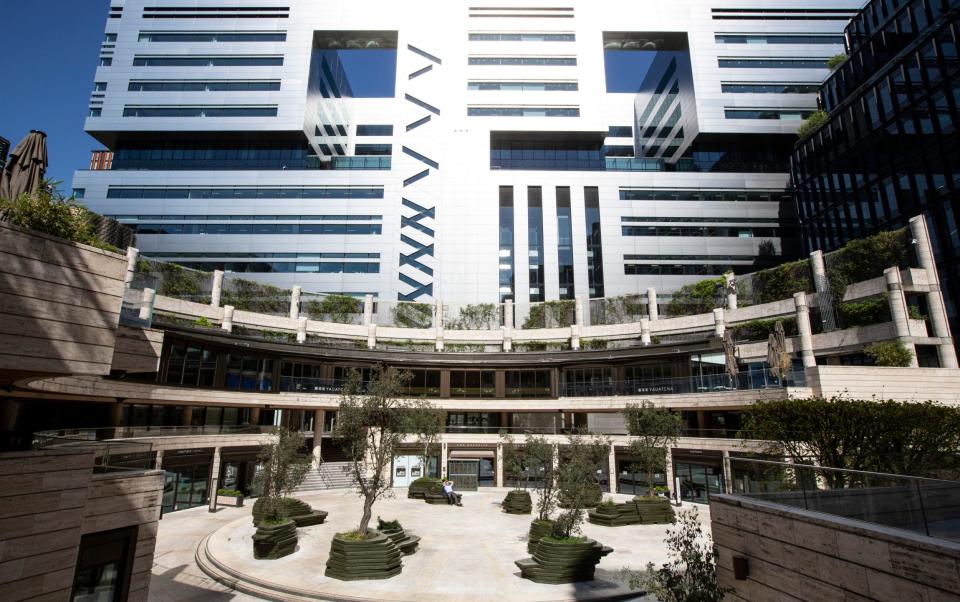Our property portfolio record is a mixed bag, but this stock may well be something to build on

Since the market’s worries on bank stocks are starting to focus on their exposure to commercial real estate, it would make sense to assess the Questor portfolio’s exposure to property companies.
In some ways, this is a bit of a sore point. Barring a well-timed exit that locked in a nice profit at Harworth, the recent record here is mixed, with tardiness permitting healthy capital gains to slip away at Derwent London and CLS Holding and a poorly timed study of British Land in 2018 leading to paper losses. Yet it may be worth clinging on to those three, even if 2023 may be another testing year for the sector.
This may seem perverse in light of Tuesday’s call to bank profits on OSB thanks, in part, to the suspicion with which markets are now viewing exposure to commercial property. But there is (hopefully) method behind the apparent madness.
In the case of OSB, the shares had done well, we had a profit to protect, and the stock was still trading at around book value. With the real estate investment trusts (Reits), our total returns are more modest (though still positive at Derwent London and CLS, thanks to dividends received) and the stock all of three trades at a substantial discount to net asset value (NAV).
Sceptics will say those lowly valuations are deserved, given the possible long-term impact of Covid upon working habits and, thus, employers’ need for large buildings for their staff; the challenge still posed by online shopping to bricks-and-mortar retail; and the lingering risk of a recession in the UK.
A further dampener for sentiment toward Reits is the prevailing Bank of England base rate and its apparent upward trajectory. This is driving up the yield on UK government bonds, or gilts, and in some ways, Reits are priced off gilts.
Investors demand a higher yield from property, or real estate stocks, relative to gilts to compensate themselves for the additional risks involved (such as the liquidity of the underlying asset, tenant defaults, management error and so on). The higher interest rates go, the higher gilt yields go, and the higher Reit dividend yields have to go to compensate, and the higher the yield, the lower share price, all other things being equal.
But it may be here that the opportunity lies. Whether the Bank of England is finished with raising rates or not, it feels like the peak may not be far away, as the global banking wobble surely increases the risk of a slowdown or recession.
The two-year gilt yield has an uncanny habit of moving six to nine months before the Monetary Policy Committee and at the time of writing the yield on two-year government paper is 3.4pc, some 60 basis points below the Bank of England base rate.
If the interest rate cycle is about to turn, and pivot to easing from tightening, then Reits could return to investors’ radar, as returns on cash and the yields on government bonds start to shrink.
British Land’s £6.6bn portfolio offers a wide spread of exposure to UK property, across retail parks, shopping centres, urban warehousing and what management calls “campuses”, such as Canada Water and Broadgate in London, where offices, shops and leisure combine. New development and refurbishments also mean the FTSE 100 company offers the high-quality, attractive assets that employers can use to encourage staff to return to the desk.
This also offers a way of playing any acceleration in the economy, while the balance sheet comes with a relatively low net debt position, a loan-to-value ratio of barely 30pc and no need to refinance any borrowing until 2025. A share price of 363.6p compares to the last stated tangible NAV per share figure of 695p. That dates from September, and the end of the first half of fiscal 2023.
Granted, analysts expect NAV to have retreated to 615p by the March year end and 578p by March 2024. But that means expectations are already low, the discount to forecast NAV is still 36pc and lower interest rates could put a different gloss on NAV forecasts by this time next year.
It could be a bumpy ride but in the meantime the shares offer a dividend yield of almost 6pc. And while sceptics will fret about asset prices, income-seekers can draw comfort from the fact that rental income and cash fund the dividend, not building valuations. Net rental income grew 8pc year on year in the first half, helped by a 97pc occupancy rate.
In Questor’s view, lower rates could yet help British Land to rebound.
Questor says: hold
Ticker: BLND
Share price at close: 363.6p
Russ Mould is investment director at AJ Bell, the stockbroker
Read the latest Questor column on telegraph.co.uk every Sunday, Tuesday, Wednesday, Thursday and Friday from 6am.
Read Questor’s rules of investment before you follow our tips

 Yahoo Finance
Yahoo Finance 